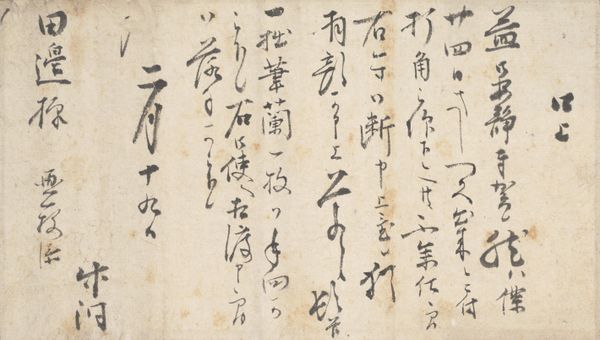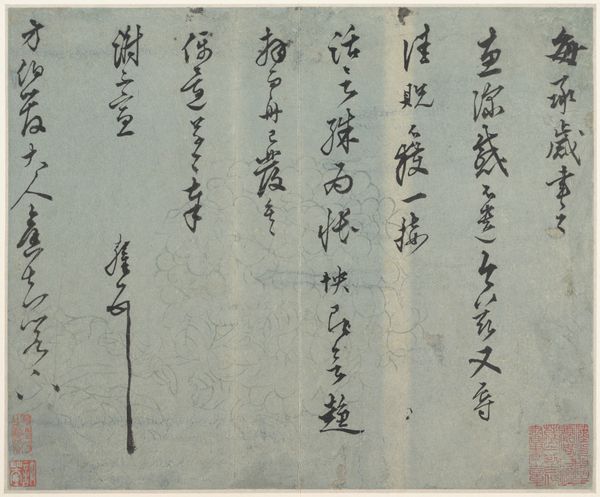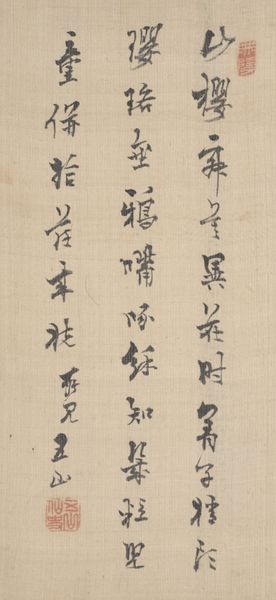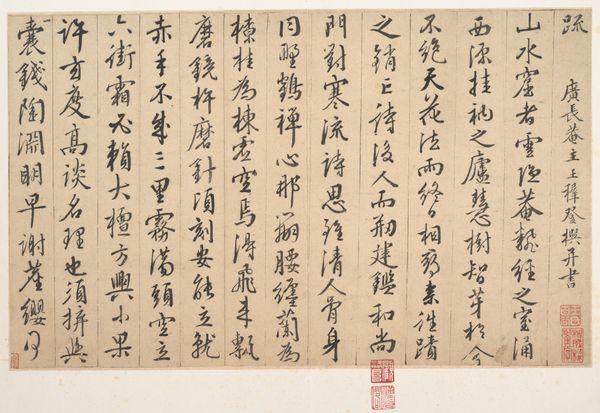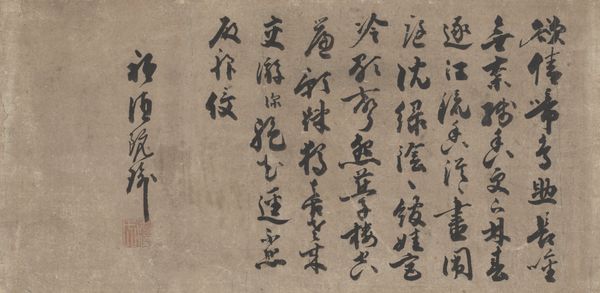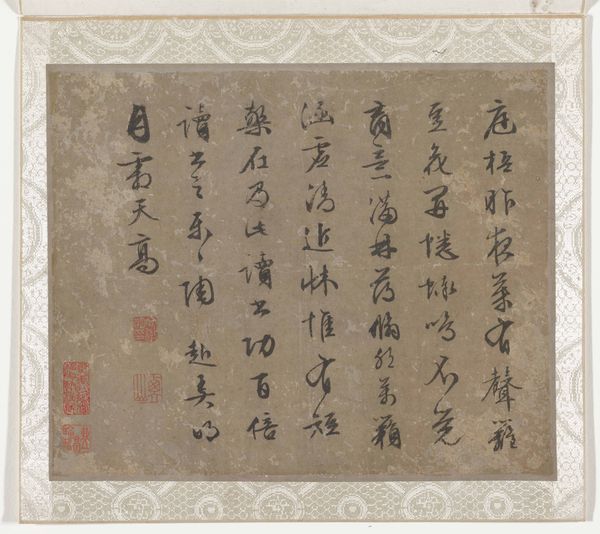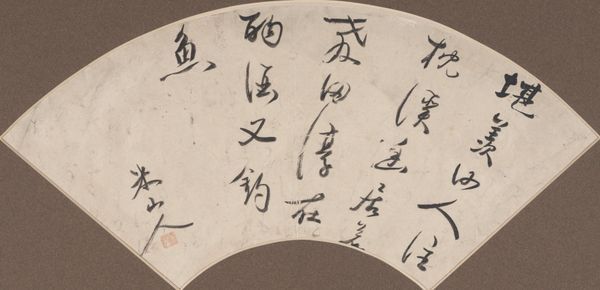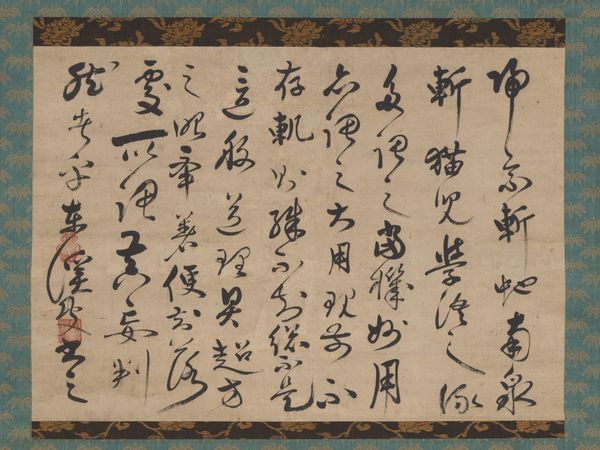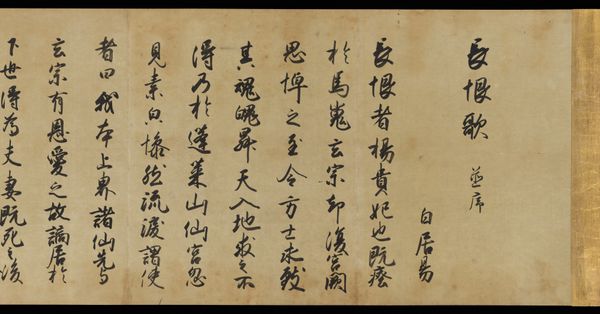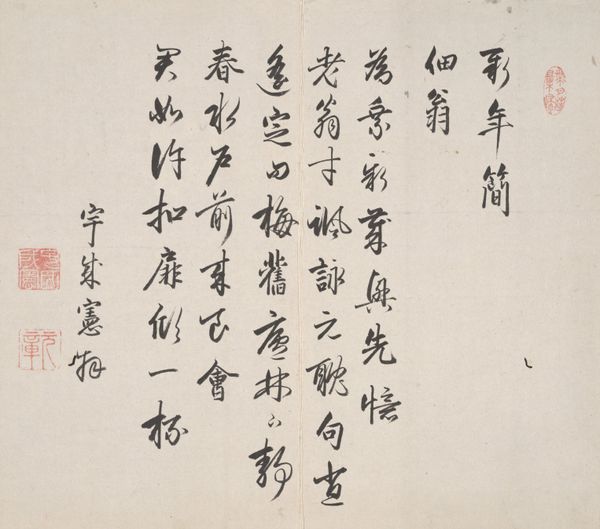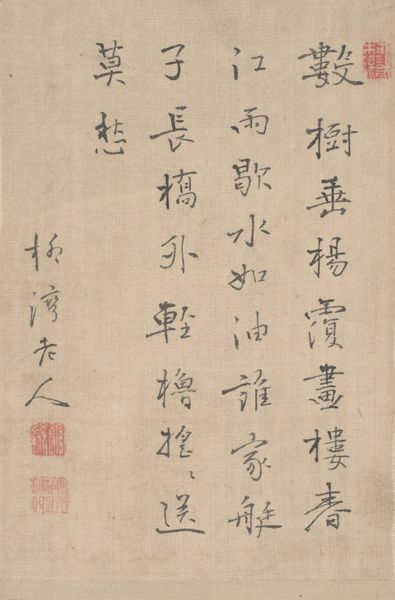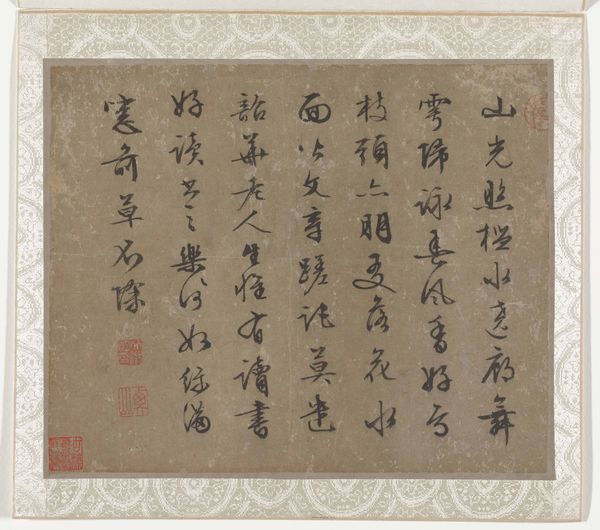
Various Designs for the Chiseller (Chōkō Shitae Shinajina) 1867
0:00
0:00
drawing, paper, ink
#
drawing
#
asian-art
#
ukiyo-e
#
paper
#
ink
#
coloured pencil
#
calligraphy
Dimensions: H. 5 in. (12.7 cm); W. 6 7/8 in. (17.5 cm); D. 1/4 in. (0.6 cm)
Copyright: Public Domain
Curator: Here we have "Various Designs for the Chiseller (Chōkō Shitae Shinajina)," created around 1867. It is a drawing made with ink and colored pencil on paper, attributed to Togyoku and others. It resides here at the Metropolitan Museum of Art. Editor: My initial feeling? Wabi-sabi! It’s got this beautiful, aged, imperfect aesthetic. I mean, just look at the staining and how time has affected the paper—it tells a story before you even begin to decipher the script. Curator: That sense of history is important. The work comes from a period of massive change in Japan, the end of the Edo period and the start of the Meiji Restoration, when traditional artistic forms were both celebrated and challenged by Western influences. Editor: You can almost feel that tension in the delicate lines alongside the bolder calligraphic strokes. It’s a real mix of discipline and freedom, isn’t it? The placement is great too; love how all of it fits together! Curator: Precisely. "Ukiyo-e," or pictures of the floating world, of course traditionally involved woodblock prints, so we have to consider what it might mean for chiseller designs to be translated into ink drawing in a prepatory document like this one. This sort of commission was part of how identities are defined in early global economies of circulation. Editor: Makes you think about how craftsmanship transforms with societal change! How things are constantly in flux—being refined and redefined through both material and context. I find the designs almost dreamlike, floating, beckoning further study! Curator: The beauty of engaging with art, isn't it? The artwork encapsulates these socio-historical processes, which resonate powerfully even today. Editor: Exactly. It just proves that even centuries later, a single piece of paper can spark conversations that help us explore our world now.
Comments
No comments
Be the first to comment and join the conversation on the ultimate creative platform.
